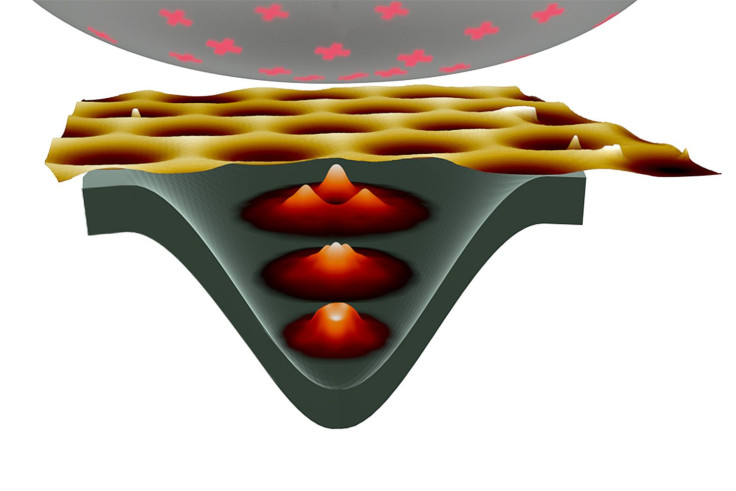Quantum Computing: ‘Artificial Atom’ In Graphene Opens Up Possibilities

Ever since Andre Geim and Kostya Novoselov first discovered/created graphene in 2001, the one-atom-thick sheet of graphite has caused excitement among scientists for its potential uses in technology, particularly in the fields of electronics and computing. And now, a team of scientists — Geim and Novoselov included — have created an “artificial atom” in graphene that opens up possibilities for quantum computing.
“Artificial atoms” are best explained as prisons for electrons — electrons have demonstrably been trapped in tiny spaces on some semiconductor materials. Under confinement, electrons may exhibit properties different from, or beyond, their usual characteristics. But like their counterparts in regular atoms, electrons in these structures — also called quantum dots — can also be made to occupy discrete quantum states.
Joachim Burgdörfer from Vienna University of Technology (TU Wien), one of the researchers involved in the project, said in a statement: “Artificial atoms open up new, exciting possibilities, because we can directly tune their properties.”
When such quantum dots are created on graphene — with its single layer of carbon atoms — it allows for “more interesting possibilities.”
“In most materials, electrons may occupy two different quantum states at a given energy. The high symmetry of the graphene lattice allows for four different quantum states. This opens up new pathways for quantum information processing and storage,” Florian Libisch of TU Wien, also involved in the project, explained.

The method employed by the team — which included scientists from RWTH Aachen University in Germany and the University of Manchester in the U.K. — used an electric field to trap electrons and a magnetic field to force them into tiny circular orbits. This method overcomes the problem created by the lack of smooth edges on any piece of graphene.
According to the scientists, “the electrons can preserve arbitrary superpositions for a long time, ideal properties for quantum computers. In addition, the new method has the big advantage of scalability: it should be possible to fit many such artificial atoms on a small chip in order to use them for quantum information applications.”
The research, titled “Electrostatically Confined Monolayer Graphene Quantum Dots with Orbital and Valley Splittings,” has been published in the journal Nano Letters.
© Copyright IBTimes 2024. All rights reserved.





















